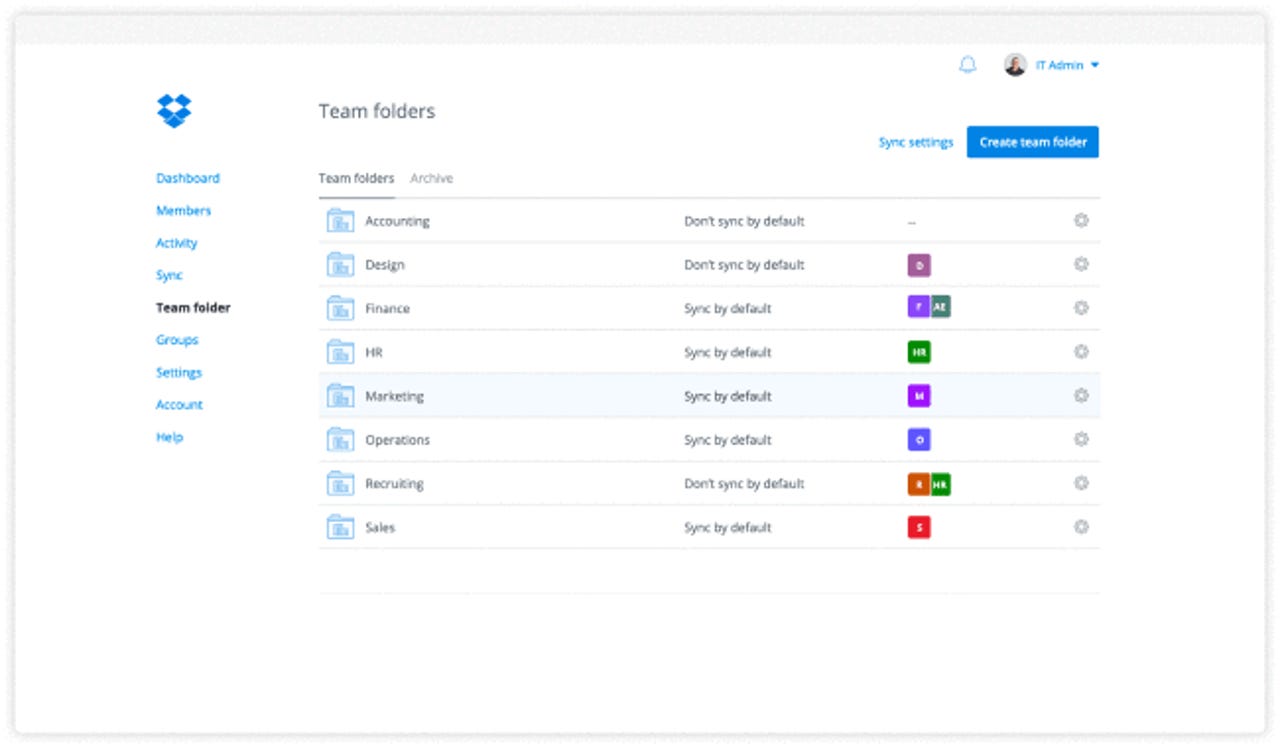Dropbox adds more security, collaboration controls to woo the enterprise


A screen shot of Dropbox's redesigned admin controls. Via Dropbox.
Dropbox is rolling out the first wave of new business features stemming from an internal project dubbed AdminX.
Featured
In a nutshell, Dropbox is trying to improve the way businesses and teams use its platform. It's doing so by revamping its admin dashboard and adding more folder-level controls for document sharing, organization, and security.
Most notable among the new features is the ability for admins to control folder access down the sub-folder level. This means business users can grant permissions to only the specific folders needed by someone inside or outside the company, depending on their role.
Meanwhile, admins can now use the new Admin Console to monitor who is collaborating and on what files through a single team folder manager tool. There's also a sync management tool to let admins control what content will sync automatically on company-owned devices.
Additionally, business users will notice more centralized group control, via new company-managed groups, and expanded file event logging, Dropbox said. Another feature not yet released will let admins set limits on the number of synced devices that can be synced, with the aim of boosting security and preventing unauthorized access.
Looking at the bigger picture, these new features work to make the Dropbox experience more robust and serve as another link in the chain toward making the platform more enterprise friendly. Like other players in the cloud storage space, Dropbox faces competition from both its upstart peers and legacy tech vendors.
Just a few weeks ago the company rolled out a bunch of new features designed to improve user productivity and the way large teams work together. In May, Dropbox made it easier for companies to integrate Dropbox's enterprise cloud storage services into core IT processes. It also inked deals with a bevy of new EMM integration partners, the biggest being IBM.